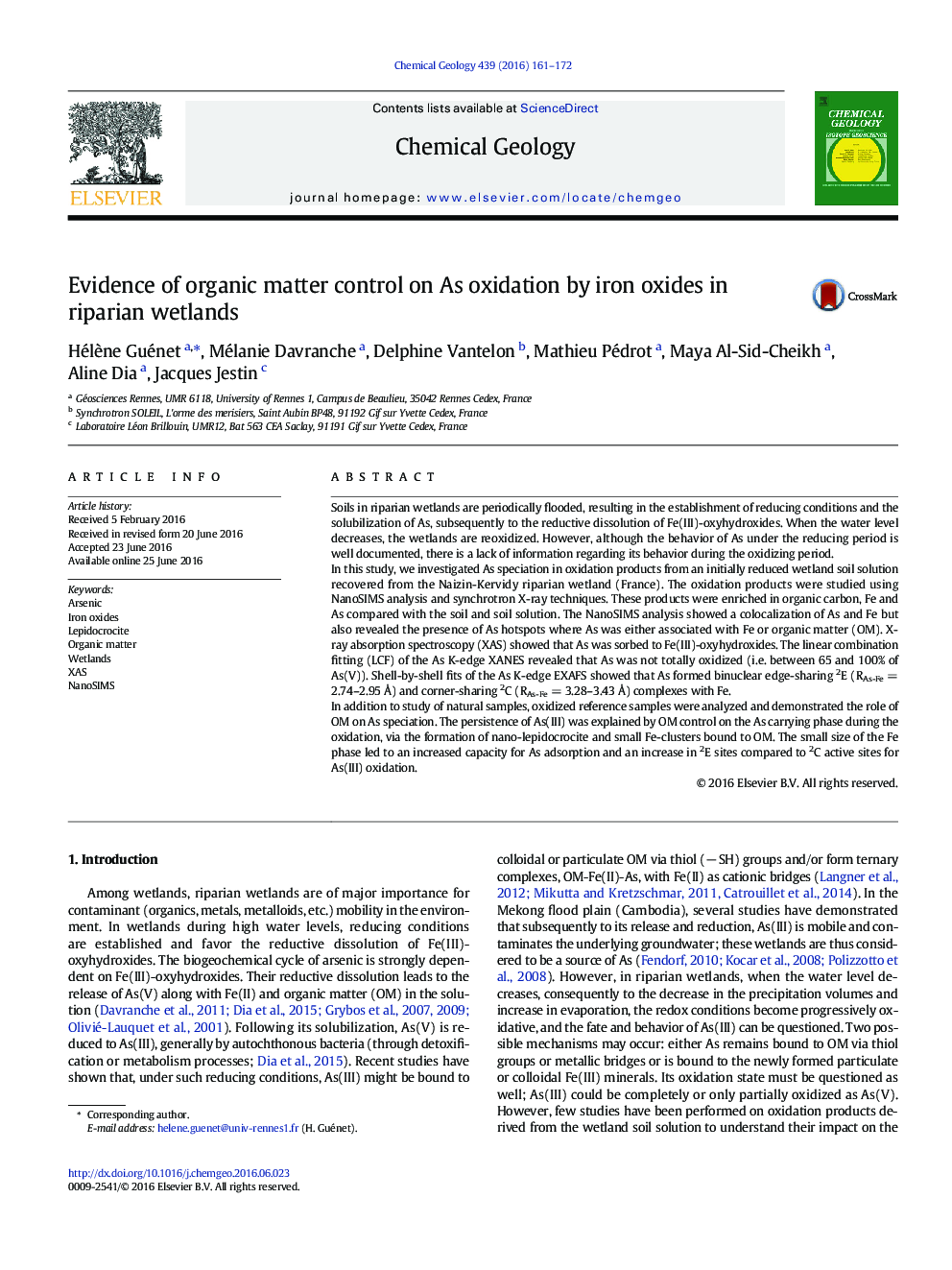| کد مقاله | کد نشریه | سال انتشار | مقاله انگلیسی | نسخه تمام متن |
|---|---|---|---|---|
| 4698264 | 1637535 | 2016 | 12 صفحه PDF | دانلود رایگان |
Soils in riparian wetlands are periodically flooded, resulting in the establishment of reducing conditions and the solubilization of As, subsequently to the reductive dissolution of Fe(III)-oxyhydroxides. When the water level decreases, the wetlands are reoxidized. However, although the behavior of As under the reducing period is well documented, there is a lack of information regarding its behavior during the oxidizing period.In this study, we investigated As speciation in oxidation products from an initially reduced wetland soil solution recovered from the Naizin-Kervidy riparian wetland (France). The oxidation products were studied using NanoSIMS analysis and synchrotron X-ray techniques. These products were enriched in organic carbon, Fe and As compared with the soil and soil solution. The NanoSIMS analysis showed a colocalization of As and Fe but also revealed the presence of As hotspots where As was either associated with Fe or organic matter (OM). X-ray absorption spectroscopy (XAS) showed that As was sorbed to Fe(III)-oxyhydroxides. The linear combination fitting (LCF) of the As K-edge XANES revealed that As was not totally oxidized (i.e. between 65 and 100% of As(V)). Shell-by-shell fits of the As K-edge EXAFS showed that As formed binuclear edge-sharing 2E (RAs-Fe = 2.74–2.95 Å) and corner-sharing 2C (RAs-Fe = 3.28–3.43 Å) complexes with Fe.In addition to study of natural samples, oxidized reference samples were analyzed and demonstrated the role of OM on As speciation. The persistence of As(III) was explained by OM control on the As carrying phase during the oxidation, via the formation of nano-lepidocrocite and small Fe-clusters bound to OM. The small size of the Fe phase led to an increased capacity for As adsorption and an increase in 2E sites compared to 2C active sites for As(III) oxidation.
Journal: Chemical Geology - Volume 439, 7 November 2016, Pages 161–172
